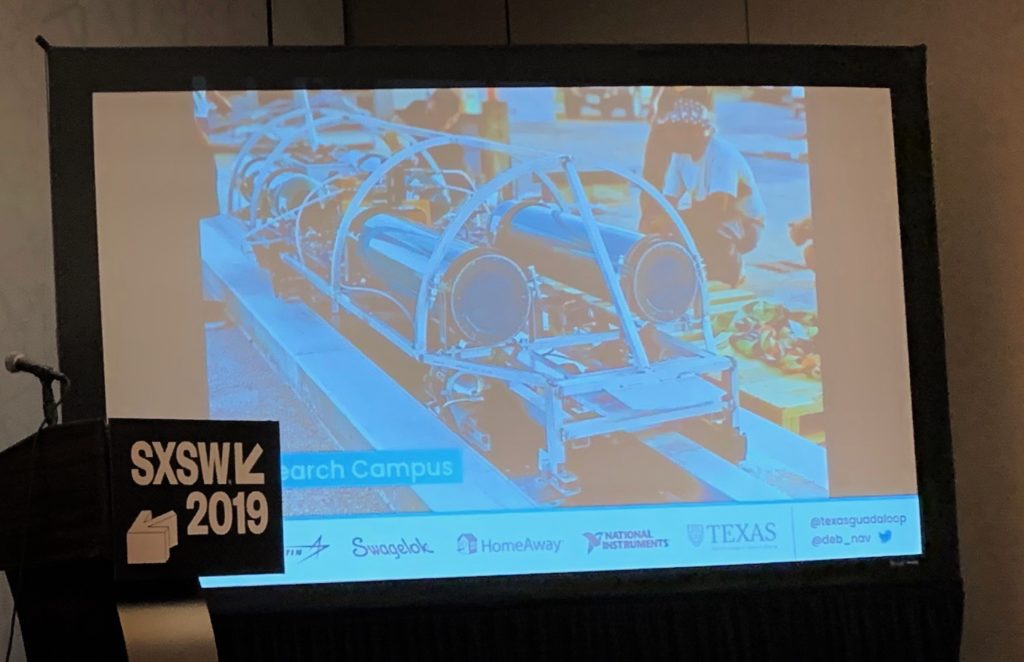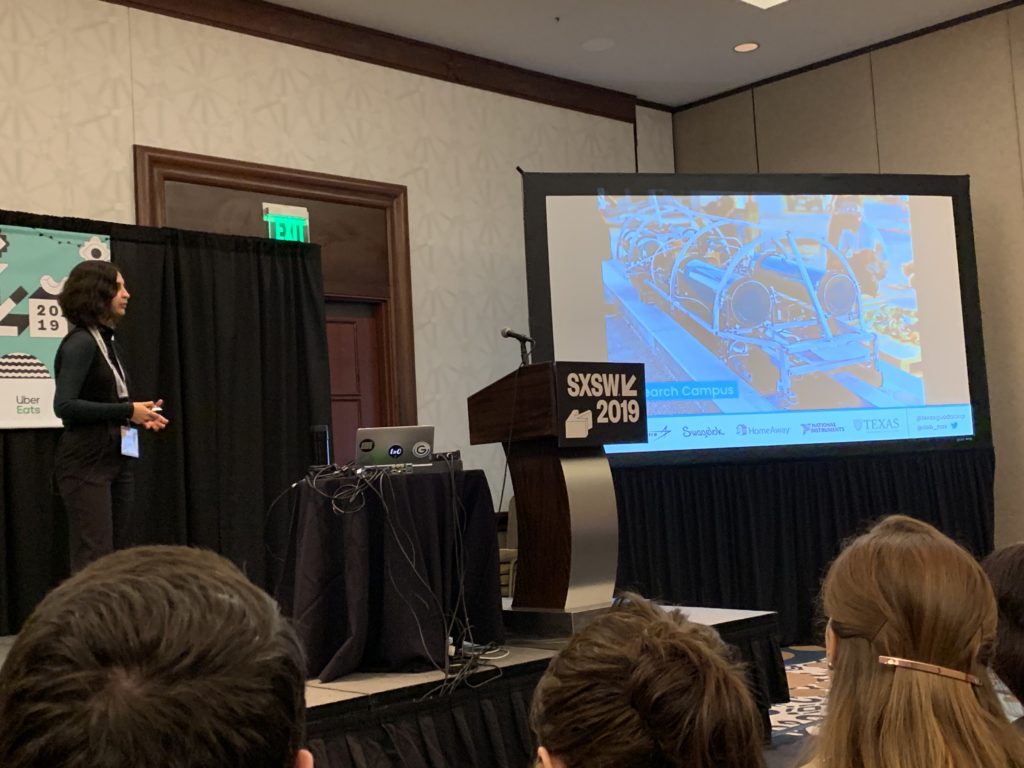
Most people spend a lot of their day sitting miserably in traffic. Not only does sitting in traffic put productive time to waste, but it also continues to damage our earth.
UT alumna Deborah Navarro hosted a panel which focused on transportation methods using air-levitation. She and other engineers, part of a research group and the start-up Guadaloop, have attempted to develop a transportation method that could be more cost efficient and convenient for an everyday person.
In her panel, she stated that in the year 2050, there will be 10 billion people on earth. Cars will taint our oceans, cities, and our water. We have normalized transporting ourselves in cars that are overall very dangerous. Every 24 seconds someone dies in a car accident and 99.9% of the time, people are responsible for the car accidents. Cars rarely ever malfunction.
With this being a known issue, engineers around the world are trying to make everyday transportation a safer experience for humans and for our planet.
The hyperloop was created to connect major cities. It’s connected in a system that are tubes above or below ground. Navarro mentioned that this thought isn’t a new idea. In the late 1800s, there was an actual pneumatic system. The popularity rose again in 2013 because of Elon Musk. Then, the Hyperloop Pod Competition was announced.
From Los Angeles to San Francisco is a high speed rail that costs $100 billion. Navarro and her team asked themselves, “Why aren’t we doing things better?” Since the 70s, magnetic levitation has worked, it gives a great experience, but it’s expensive costing $100 billion. So, Guadaloop wanted to prove that air levitation would be a viable form of transportation to take its place.

There were 120 teams that competed in the competition and out of those teams, 20 were chosen to build their vehicles at the SpaceX Headquarters. The first version of the vehicle was built in 2017 by the team. Since then, they’ve been thinking of different ways to improve it.
After multiple tests and versions of the vehicle, the team tested the vehicle in a vacuum. In conclusion, air levitation in a vacuum works. Navarro mentioned an amazing feelings she received from this, which made this project more meaningful. Having the mindset to create a different mode of transportation that actually works, that is actually safe and cost efficient, is a huge accomplishment. She mentioned multiple times in her panel that her team choosing to do this wasn’t just to do it, but because they cared about transportation. They want to change the way people live, move, and choose how to work.
Her team won the competition.
“Start small. Think big.”
Deborah Navarro
Deborah mentioned that from the beginning of the project until now, things have changed since the start. She also acknowledge the other contributors to the project. Hyperloop One conducts feasibility studies all over the U.S. and the world to see where they can construct the Hyperloop vehicle. India was the country chosen, and there will be a route from Mumbai to Pune. The 4 hour, 25 minute-long trip can now be traveled in 25 minutes due to the hyper loop vehicle. There’s also acknowledgement toward The Boring Company that helps make transportation 3D. Systems can be improved and expanded indefinitely. There is no practical limit to the number of tunnels. Cities are in 3D, and transportation should be as well.
Air Levitation Vehicle
The vehicle uses existing modes of transportation. Essentially, the plan for the future is for every car to use this process. The vehicle that you drive would take an elevator underground to an existing tunnel and be darted from one end to the next. This invention could help prevent congestion and allow for the air we breathe to be cleaner.
All [companies] have one vision. Each work together to tackle unique problems. The key is infrastructure. Why not combine magnetic levitation with air levitation? Air bearing (from magnetic levitation) could be used to reduce wheel friction.
The goal for the hyperloop is to reach 760 miles per hour. With multiple trial runs, a lot of progress is being made.
Approval in necessary when it comes to this project. People may own the land that they live on no matter how far under the ground it is. The team needs governmental support and land rights.
In 1904 we had our very first flight, but more advancements in technology need to take place. Remember back to the fact mentioned in the beginning of the article. By the year 2050, there will be 10 billion people living on earth. Cars will taint our oceans, cities and our water.
“How dangerous will it be if we don’t make big leaps agains.”
Deborah Navarro
At this moment, the MAX V.1 can reach up to 300 miles per hour, lift 12,000 pounds of weight, and uses 1/10th of the energy a magnetic levitation model uses. With the invention of air levitation technologies, they can be used to integrate rockets, and even for existing modes of transportation, such as subways, trains, and planes.

Comments are closed, but trackbacks and pingbacks are open.